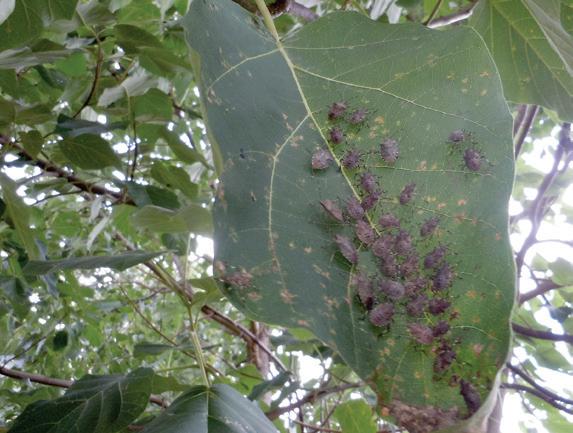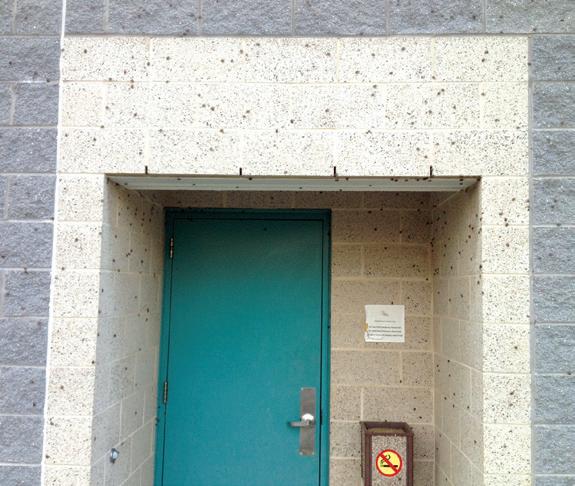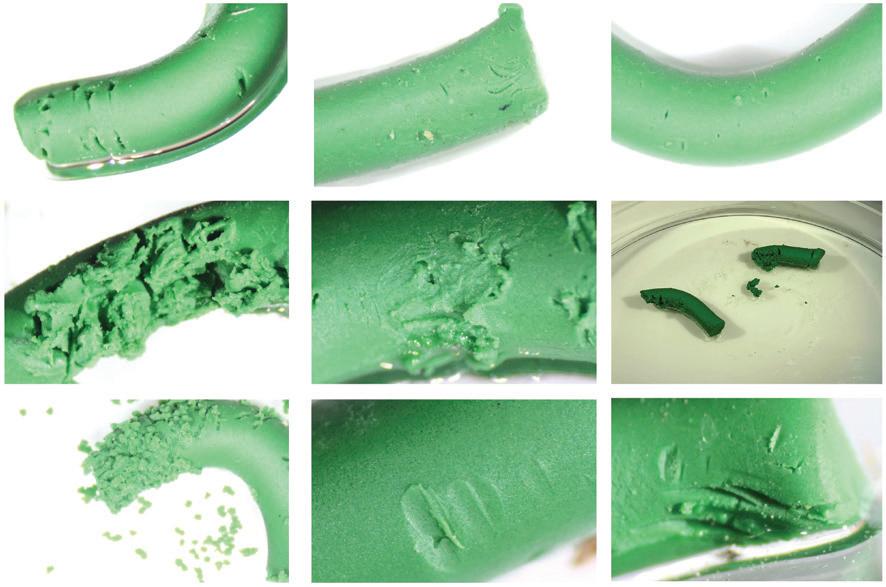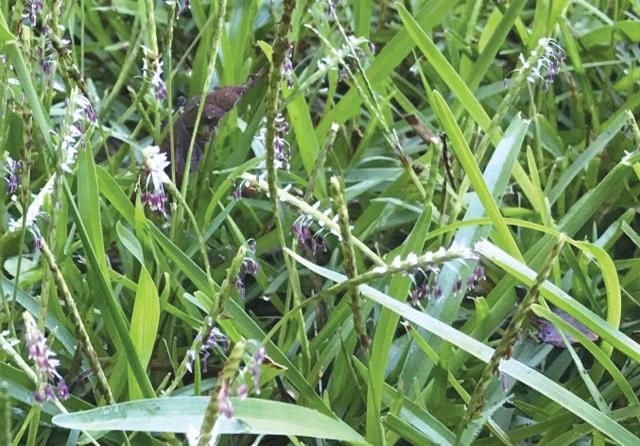
6 minute read
Pest 411 Brown Marmorated Stink Bug
Brown Marmorated Stink Bug
Look for this landscape pest in spring and summer
by Fawad Z. A. Khan and Shimat V. Joseph, University of Georgia
The brown marmorated stink bug (BMSB)
and ornamental plants. The BMSB is also a nuisance pest as they aggregate and overwinter in man-made structures beginning late fall. Halyomorpha halys Stål (Hemiptera: Pentatomidae; Fig. 1) is a landscape and agricultural pest in the U.S. It was introduced from Asia to the U.S. in the mid-1990s. The BMSB's quickly spread to the entire U.S. because of overwintering and hitchhiking behavior Ken Childs, Bugguide.net in the fall. The Fig 1. Adult stage of brown marmorated stink early detection and bug (Halyomorpha halys) (Stal) distribution mapping system (EDDMapS) shows 95 positive reports throughout Georgia and is established in the piedmont region of the state. This pest is reported to infest more than 170 plant species, including fruits, vegetables,

Illustration by Fawad Khan Fig 2. Life cycle of brown marmorated stink bug (Halyomorpha halys) (Stal)
Biology and behavior
The BMSB overwinter (diapause) as adults, and they do not feed during this time. In spring, they emerge from the overwintering sites and seek immediate nutritional resources from developing flower and fruits before laying eggs. The BMSB undergoes three life stages: egg, nymphs (five nymphal instars), and adult (Fig. 2). The BMSB female lays eggs in a mass with about 28 eggs. A female can lay between 2 and 15 egg masses during the lifetime. The light yellow to light green barrel-shaped eggs are glued to the host's surface (leaf, fruit, stem) (Fig. 3). The first instars have an oval- and tick-like appearance with mottled orangish-red and black coloration and remain aggregated around the egg mass (Fig. 4). The subsequent instars disperse seeking nutritional resources. The second to fifth instar nymphs are black and white-colored and have well-defined white bands on legs and antennae (Fig. 5). In the laboratory, the nymphs take about 43 days to grow before molting into adults. The adults are grey-brownish and shieldshaped with two white bands on antennae and mottled white and black stripes along the lower

Yurika Alexander, Bugguide.net Fig 3. Eggs of brown marmorated stink bug (Halyomorpha halys) (Stal)
margins of the body (Fig. 1). BMSB adults can live up to 119 days. They after often found aggregated on host leaves (Fig. 6). The brown marmorated stink bug differs from the brown stink bug, Euschistus servus, due to the presence of white bands on antennae and legs (Fig. 7).
There are two generations of BMSB per year in Georgia. The nymphs from the overwintering adults mature into summer adults by late July or August, and the nymphs from the summer adults mature into overwintering adults in September or October. These adults seek overwintering sites in the fall. The BMSB are strong flyers and can fly long distances, approx. 3.7 miles/month. In addition, the fifth instar of BMSB can walk up to 65 feet in four hours.
Host plants and damage
BMSB can feed on plant hosts from multiple families. In Georgia, more than 150 ornamental plant species are potential hosts of BMSB. The invasive tree, tree-of-heaven (Ailanthus altissima) is a preferred host for BMSB in the landscape (Fig. 8). The invasive tree, tree-of-heaven is the early occupiers in loblolly pine (Pinus taeda)black oak-white oak forests in piedmont region of Georgia. BMSB populations were observed where flowering dogwood tree (Cornus florida), yellow-poplar (Liriodendron tulipifera), Chinese privet (Ligustrum sinense), winged elm (Ulmus alata), sweetgum (Liquidambar formosana), maple (Acer spp.), oaks (Quercus spp.), walnut (Juglans spp.), crape myrtle (Lagerstroemia spp.), and honey locust trees (Gleditsia triacanthos) are present.
BMSB feeding causes discoloration, distortion, and drying of the host tissue, although the extent of damage depends on the life stage, the number of individuals, and the host plant's stage such as flowering, fruiting, etc. BMSB population causes direct and indirect feeding damage to the nursery and landscape plants. Direct feeding causes wilting of foliage (loss of rigidity), foliage stippling (dead brownish spots), bark discoloration (loss of color), and even death of some herbaceous plants. Indirect feeding causes the transmission of diseases (like witches’ broom disease), which may hinder normal plant growth.

Marcia Morris, bugguide.net Fig 4. 1st instar nymphs of brown marmorated stink bug (Halyomorpha halys) (Stal)

Shimat V. Joseph, University of Georgia Fig 5. Nymphs of brown marmorated stink bug with prominent black and white bands on antennae and legs

Shimat V. Joseph, University of Georgia Fig 6. Nymphs and adults of brown marmorated stink bug aggregating on catalpa leaves
Mike Quinn, TexasEnto.net and Melinda Fawver, bugguide.net Fig 7. Comparison of Brown stink bug (Euschistus servus) (left) and Brown marmorated stink bug (right)



Shimat V. Joseph, University of Georgia Fig 8. Brown marmorated stink bug feeding on tree-of-heaven

Shimat V. Joseph, University of Georgia Fig 9. Brown marmorated stink bug adults invading office building seeking entry in fall
Dispersal and overwintering
BMSB adults seek man-made structures such as barns, storage structures, vehicles (RVs and enclosed trailers), and people’s houses and office buildings as suitable sites for overwintering during the fall (Fig. 9). Several of them overwinter inside the dead and live tree bark. They prefer dry and tight sites for overwintering. BMSB is regarded as a nuisance pest because of its invasion of man-made structures. They find access into these structures through crack and crevices present in the improperly sealed exterior doors and windows. Pre-maturely active adults walk and fly around inside the house, posing a nuisance during winter.
The overwintering behavior of BMSB also enhances their quick dispersal through human movement and trade. They hitchhike in mobile structures such as RVs, trailers, and shipping containers that are transported during winter, which causes quick dispersal across the U.S.
Management
BMSB adults and nymphs attack a wide range of ornamental shrubs and trees. Ornamental plants in the landscape play a critical role in the biology of BMSB because they offer breeding sites and food resources during the spring and summer. During the growing season, BMSB adults and nymphs can be monitored using commercially available traps such as clear sticky traps, black pyramid traps baited with lures containing the species-specific communication chemicals (pheromones). In ornamental nurseries, high densities of BMSB are found near the edges of the field; hence, this behavior can be utilized for managing the pest. Predators such as ground beetles, jumping spiders, earwigs, crickets, and parasitoids such as egg parasitoids, especially samurai wasps, Trissolcus japonicus (Hymenoptera: Scelionidae) effectively reduce BMSB populations in the landscape. Insecticide applications should be considered if the population is high and apparent damage symptoms are observed. If insecticides are opted, repeated applications are warranted as the residual activity of effective insecticides (mostly pyrethroids, neonicotinoids, and organophosphates) do not last long enough for adequate BMSB control. The landscape trees and plants or nursery stocks closer to overwintering structures are especially susceptible to influx of adults’ invasion in spring months. Contact your county agents for up-todate recommendations for BMSB management.











